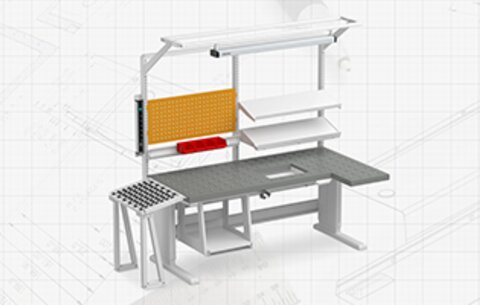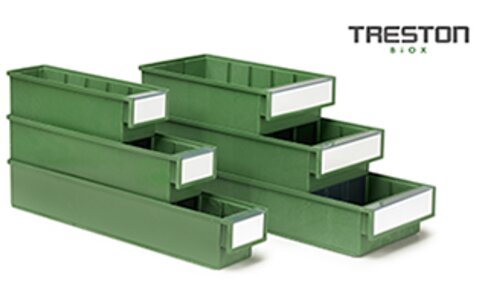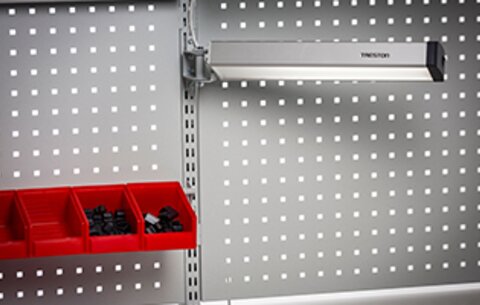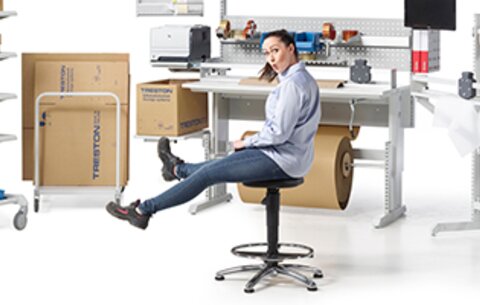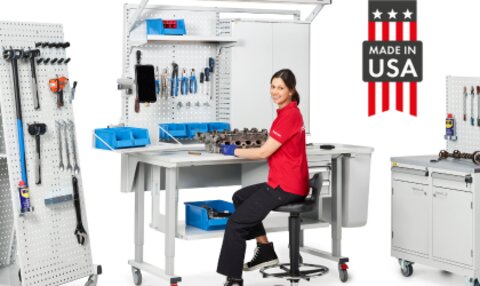

Light Up Your Workplace with Treston LED Lighting

Carissa Harris
Good workspace lighting is critical because makes sure that your employees can properly execute their task and provides a safe environment. Good lighting influences many aspects of your organization; not only is light important for seeing, but it also prevents mistakes and minimizes the risk of injury or accidents.
Problems Associated with Dim or Harsh Lighting Include:
- Eyestrain
- Headaches
- Drowsiness
- Lack of focus
- Poor employee motivation
- Fluorescent lighting can trigger migraines

Changing to LED lighting brings savings in the form of energy efficiency and long service life. Quality lighting also reduces errors and boosts productivity. In one study, a new lighting solution in the metal industry improved performance by more than 15%! Industries such as fine assembly work, where proper lighting is essential for completing tasks, will see greater productivity and fewer errors.
In addition to improving our task accuracy and speed, proper lighting can also add a sense of security, create atmosphere and hide or accentuate as required. With efficient adjustable lighting, you can decrease headaches, set your body clock and even improve your mood. Studies on lighting effects on alertness show that workplaces with proper lighting have fewer accidents and more alert workers, particularly under shift-work conditions. In the metal industry, accidents decreased 52% after improving lighting levels.
Testing Your Workplace Lighting
Have you effectively tested your workplace lighting? A Lux Meter can determine the amount of light available at each workstation. You can also download a lux meter from the app-store. Though not as reliable as a professional measuring tool, it gives you a general idea on the state of your lighting.

The amount of light you need will depend on the task you are completing. Lighting should generally be between 300 and 800 lux. For smaller assembly products such as circuit boards, the advice is to have a light strength of at least 1,000–1,350 lux. As a general rule—the more detailed the work, the higher the amount of lux should be.
Components of Good Lighting
- Luminances and their distribution (depends on light and surfaces)
- Illuminance
- Color rendering index and color of light
- Glare prevention (direct, reflection)
- Direction of light (parallelism, glossy reflections)
- Variation in amount of light
- Share of daylight
- No flicker (no stroboscope effect)
Lighting could well be one of the most underestimated elements of efficient workplaces. A study recently conducted in the US showed that 68% of employees complain about their lighting situation. Don't let this situation appear in your workplace. For information on Treston LED lighting solutions, click here.
Find Reliable Lighting Solutions for Your Workplace at Treston
If you're interested in enhancing the lighting of your workplace, then explore Treston's online lighting and accessories inventory to find a unique solution for you and your workers. Then, when you're ready to take the next step and discuss LED lighting orders with our specialists, contact our team directly and we'll be happy to accommodate you and offer a quote for your order.
References:
http://www.andrewjensen.net/how-office-lighting-affects-productivity/
http://www.iar.unicamp.br/lab/luz/ld/Arquitetural/interiores/ilumina%E7…

